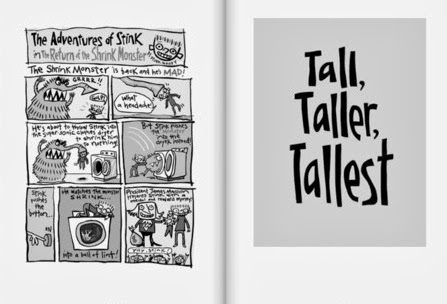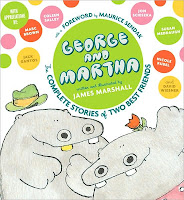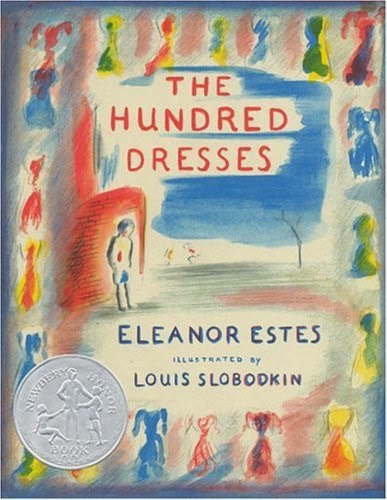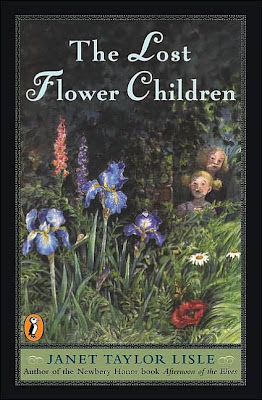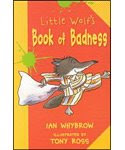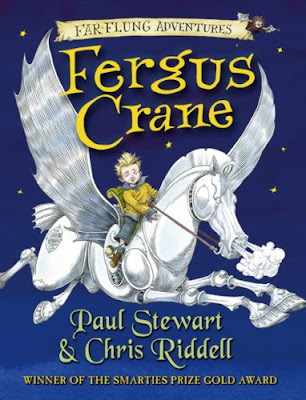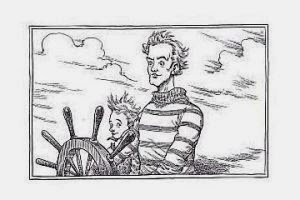Everything on a Waffle by Polly Horvath is the winner of the 2002 Newbery Honor. I loved this book the minute I opened it, probably because it had a recipe - a recipe a 9 or 10 year old kid could actually make - at the end of each chapter. Of course, I also admired the stoicism and practicality of the wonderfully crafted narrator, 11 year old Primrose Squarp.
Everything on a Waffle reads almost as if John Irving had honed down one of his weighty tomes into a young adult novel. The characters have great names and quirks like Miss Perfidy, who leaves the room mid-conversation, abuses moth balls and is over 100 years old, and Miss Bowzer who runs the Girl on a Red Swing restaurant where everything, including swordfish, salad and shepherd's pie, is served on a waffle. And, things that should be horrible but somehow come out crazy and funny happen to the characters, especially Primrose. Some of my favorite chapter titles are, "I Lose a Toe," "I Set Fire to a Guinea Pig," and "I lost Another Digit." I suspect, if another author had written this book and had a boy as the main character, these chapter titles would bode much worse outcomes than what actually happens in Horvath's superbly written story.
The story begins in the fishing village of Coal Harbour, British Columbia when a typhoon blows up. Primrose's father is out on his fishing boat and her mother heads off in her skiff to find him after leaving Primrose with Miss Perfidy. The book follows Primrose as she moves in with her distracted but likable Uncle Jack, who has returned to Coal Harbour to care for her. The book also explores Primrose's steadfast conviction that her parents have not perished at sea, despite the teasing from her classmates and frustration and borderline malice from the closest-thing-to-a psychiatrist the town has, Miss Honeycut.
Primrose finds a sympathetic yet pragmatic listener in Miss Bowzer after she ducks into the kithcen of the Girl on a Red Swing one day while fleeing her tormentors. Miss Bowzer puts Primrose to work and teaches her how to cook all the while complaining about her Uncle Jack, who has turned himself into a real estate developer and is trying to buy out half the town, including Miss Bowzer and her low-brow restaurant. After losing two digits, Primrose is sent to live with a foster family, the middle-aged, hilariously unique Evie and Bert (and their cockapoo, Quincehead.) Disaster continues to follow her to almost the end of the book, but I believe that there is not a single reader who does not also share Primrose's convictions about her parents and never once doubts that Everything on a Waffle will have a happy ending.
Also by Polly Horvath is My One Hundred Adventures, which is an amazing work in miniature detail about Jane, who, during the summer of her twelfth year, decides that she is going to have one hundred adventures. The characters are a bit less wacky than in Everything on a Waffle and, while Jane's family life seems a bit less precarious despite the fact that she does not know who her father is, or the father(s) of her three siblings and one of the father's just might have disappeared at sea as Jane helplessly watched on, her experiences and interior life seem a bit more serious and her happiness a bit more at stake.
If your reader liked Everything on a Waffle and has read everything by Polly Horvath, try:
Savvy by Ingrid Law
The Higher Power of Lucky by Susan Patrton



